Väinämöinen and Ilmarinen were both built at the Crichton-Vulcan shipyard in Turku, launched in 1931 and 1933 and soon nicknamed in the international press the “Lighthouse Battleships”. Ilmarinen completed her trials and was commissioned on 17 April 1934, joining her sister ship Väinämöinen already in service. They were the first Finnish capital ships, largest country’s warships ever and last coastal defence ships, the first also German designed. As the Continuation War ended, Väinämöinen was handed over to the Soviet Union as war reparations (renamed Vyborg, scrapped 1966) and her sister Ilmarinen sunk on mines in 1941.
Finland’s first coastal battleships

Initial 1929 design, with the mast further forward, not adopted. Note the icebreaker bow.
In the early inter-war Finnland garnish its youg navy with mostly 30 ex-Russian vessels, war-trophies from the civil war. The majority were either gunboats or minesweepers. They were not ideal for the navy’s needs under the shadow of the Russian bear, which ambitions to the West never quenched and which own naval rebirth started in 1922. The Finnish ships were nearly all pre-WWI designs, obsolete, in addition to be worn out and in general poor condition. In 1925, already an old torpedo boat sunk during a storm, with its whole crew of 53. But if the naval staff wanted new ship, the parliament wanted until then nothing to do with it and only intensive lobbying relayed in the press led to the adoption of the Finnish Navy Act of 1927.
This fleet renewal program planned notably a deterrence force around submarines, minefields and gunboats. The acquisition or construction of five submarines, given to a new design bureau at the Hague in the Netherlands (basically German designs) was completed by four torpedo boats and two coastal defense ships which needed to be defined. The type was intended also to procure deterrence against anything but a battleship. Any cruiser and below were to be scared off by their big guns. The concept was not new, and a favorite in Scandinavia with Sweden being the world’s champion in this category with eight of such coastal ships.
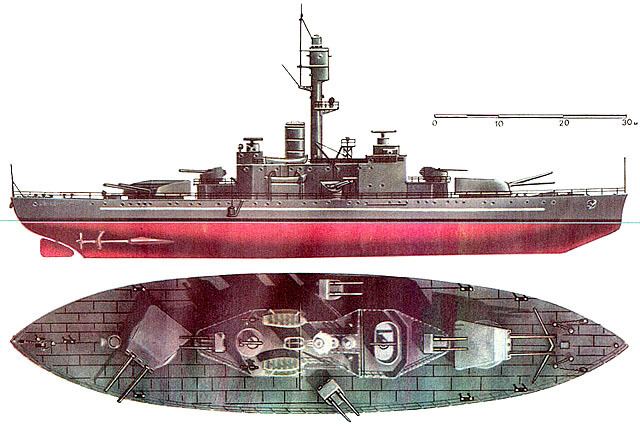
Väinämöinen and Ilmarinen when first planned were however a brand new design, tailored to Finnish needs, and they were small but very well armed, with the most concentrated artillery ever seen in the category. Perhaps it’s no surprise if they were ordered to the very same company that provided Finland’s own submersibles: The Dutch company NV Ingenieurskantoor voor Scheepsbouw. This was a known front for German interests, an ambassador of German companies struck by the interdictions of the Treaty of Versailles. So basically they were a design that would look like the ideal coastal warship the new Kriegsmarine would have built for itself, as wished by the allies. But they were optimized for archipelagos operations and so traded open sea performance for a shallow draft and very compact design given the heavy artillery placed on them.
The two ships were tailored for the Baltics and shore operations and as such, not well suited foropen seas. These were “archipelago battleships”, and not the best stable platforms due to their combination of shallow draft and low freeboard. They were found unstable and rolled much. They were also beyond what was considered unsafe in terms of metacentic hight, notably due to their high and heavy conning tower. In addition they were were uncomfortable and not liked by their crews.
Coastal defence ships of the Nordic countries were already built since the 1880s, and typically combined heavy artillery with good armor protection at the price of speed and range. Average displacement was around 4,000 tons, and main armament was still a far cry to the fast battleships (above 35,000 tonnes) made by traditional great naval powers. These guns ranged between 210 and 240 mm (8 and 9 in) so above the newly define heavy cruiser caliber of 8-inches, with a armor equivalent to that of an armoured cruisers so able to defeat 8-in and 6-in rounds. They were not fast as said above, between 15 and 18 knots (28 and 33 km/h; 17 and 21 mph). They were comparable to monitors, having only two main gun turrets, can defeat a cruiser, but not intended to overseas operations. Coastal defence ships varied a lot between themselves also, with an evolution from the 1880s and in the Danish and Norwegian case, earlier monitors. It happened that the Finnish ships were a bit closer to monitors due to their armament/size ratio, and they happened to be the most advanced ships of their kind ever built (and the last). For reminder, Sweden’s last coastal battleships, the Sverige class, dated back from WWI. These Finnish vessels were as such, the first and last interwar vessels of their kind.
Design of the class
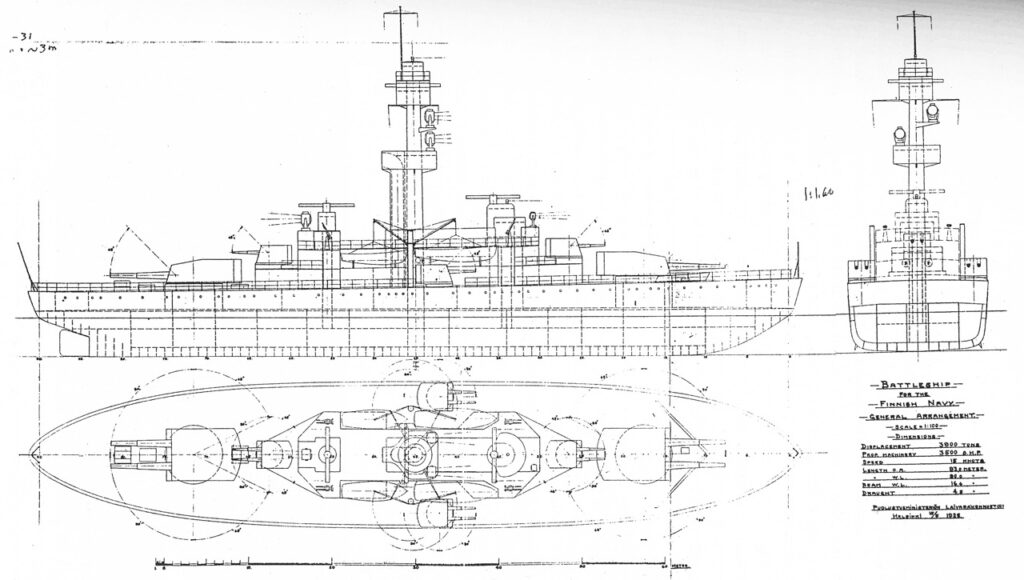
Original German blueprints, from the Hague design bureau.
Väinämöinen and Ilmarinen were planned for the young navy (born 1918) as “mobile coastal fortresses” to defend Finnish demilitarized islands, notably at Åland. They mirrored the many coastal battleships built in Scandinavia at the time, between Denmark, Norway and Sweden. Their main task was to deter enemy landing operations or naval blockades to ptotect its territorial waters and sea trade.
They became complementary to a vast defensive system already developed by czarist Russia, that Finland further expanded and reinforced with strong coastal artillery and at sea, a network of minefields, planned or existing in critical areas. The Finnish navy was to buy time for ground forces, to be redeploy in the Archipelago. In such confined waters inaccessible to capital ships, the 10-iches guns of the Finnish Vainamoinen class were a tough proposition for any fleet. The Soviet Baltic Fleet being the most looked after. These two Finnish ships were so tailored to face the old batteships Marat and Oktyabrskaya Revolutsiya, and cruiser Kirov.
Hull and general design
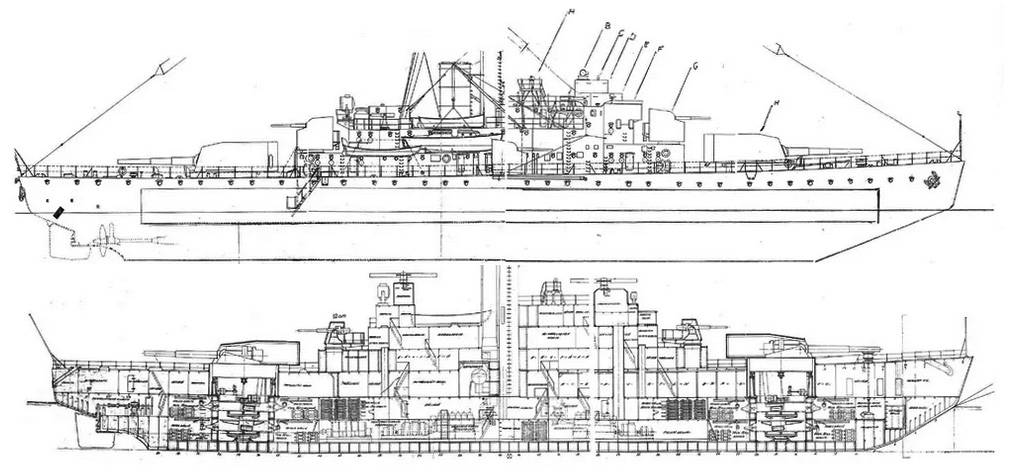
Original plans, src Meidän Panssarilaivamme by Tauno Niklander, via reddit
The ships as mentioned above, especialy compared to the Sverige class showed a very compact design, high mast, large turrets and little room to spare around a massive main structure. Contemporary experts were puzzled about these, some praising the design, others making jokes. They were not intended for open sea operations and rolled excessively, widely even on moderate seas. This was unpleasant but still they were slighlty below the limit of unsafe. With time, additional keels were fitted to reduce their roll.
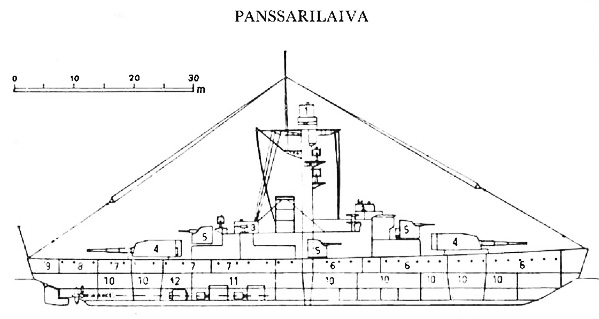
Cutaway, as built 1932
Väinämöinen and Ilmarinen were practically identical. They displaceed both 3,900 tonnes standard, with a maximum length of 93 metres (305 ft), width of 16.864 m (55.33 ft), and draught of 4.50 metres (14.8 ft). Both speed and range were sacrificed as they were only intended to stay close to their home bases.
Design wise, the outlook seemed very cramped, stubby, with just three deck levels for the hull, two for the main structure, a three storey tall conning tower forward, a smaller one aft, both topped with telemeters, tall tower amidships with armoured spotting tops, antenna supports and two projectors platorms mid-way to the top. There was another aft of the structure. The crew varied from 303 to 400 depnding on sources and era, probably more in 1944 for the lead ship.
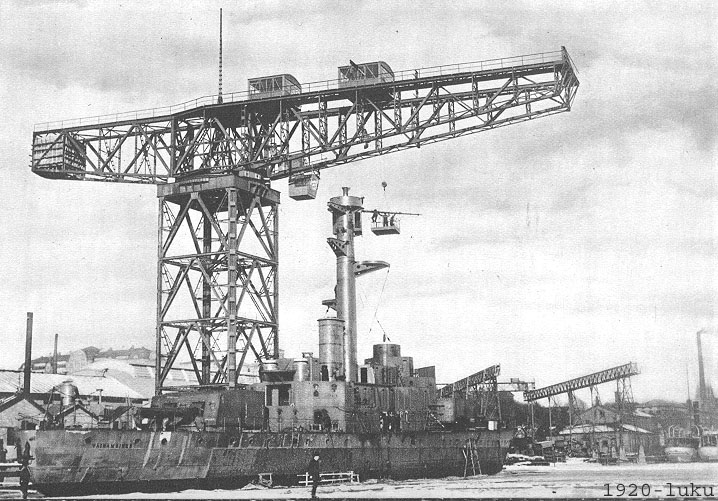
Vainamoinen in construction at Crichton, Vulcan Yard in Turku
Protection
Protection remains the great unknown of the design. None is shown on the original blueprint, many sources reported none either. Yet, they were named panssarilaiva (“armored-ship”), and at least photos and drawing shows a belt running as long as the main barbettes. The sources giving clues are navypedia, while Conways also specifies the same. It was light given their status to day the least with only the conning tower having protection against destroyer rounds. Any shell from any light ship could have through the hull like butter. Plus they had no double hull not ASW compartimentation capable to resist a torpedo or mine blast. They mostly relied on islands concealment for sneak and peak attacks.
Armoured belt: 55-50 mm (2.5-2.8 inches)
Turrets face: 100 mm (4 inches), side and back unknown, probably around 75 mm (3 in)
Decks: From 20 mm waterline (1.1 inch), 13 mm (0.5 in) weather deck, plus strays over the rudder compartment, ammo storage.
Conning Towers: Fore and aft (CT), 120 mm (5 inches), roof unknown.
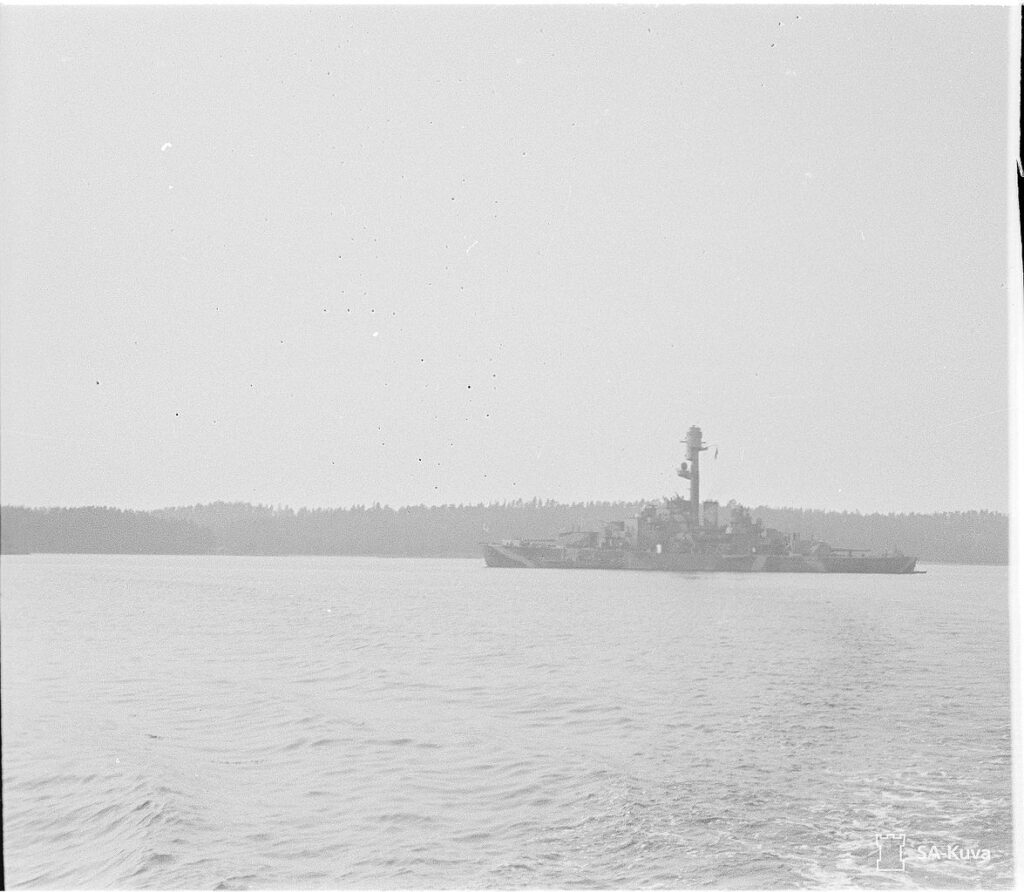
Powerplant
Choice was made of compacity, with four Krupp-Germania diesel engines mated to two Leonard electrical engines. This was an innovative solution offering great flexibility. In total, this powerplant was rated to 4,800 horsepower (3,600 kW). In addition of the main diesels were shut, there were two emergency 100 hp (75 kW) auxiliary diesels that could power essential systems when berthed or anchored, notably power up artillery. Top speed was capped to 14.5 knots (26.9 km/h; 16.7 mph), range, albeit favoured by diesels, was nevertheless limited very small tanks, containing only 93 tonnes of oil.
Armament
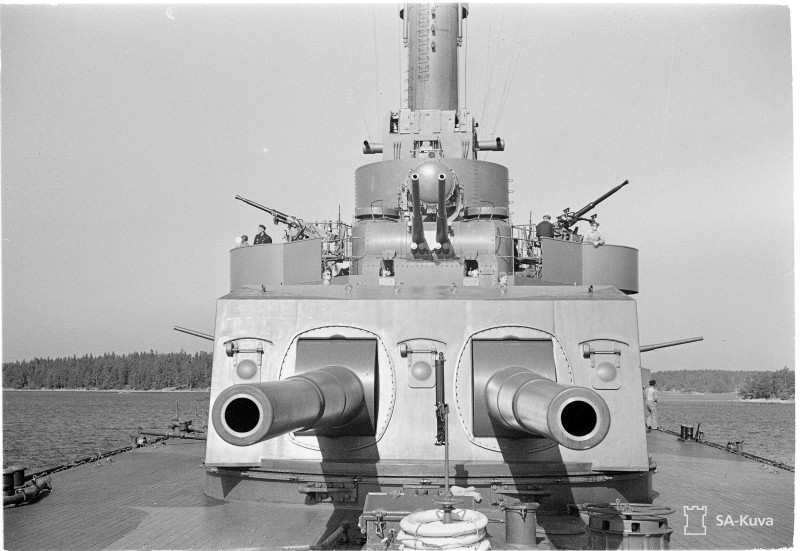
Stunning photo (National SA Kuva archives) showing all at once the forward main turret, supering twin and emerging amidship ones, and Bofors on either side. Intimidating ?
The main armament consisted in four 254 mm (10 in) Bofors guns, completed by eight 105 mm (4 in) dual-purpose Bofors guns, in four single turrets usable against fast torpedo boats and even aircraft due to their high elevation. Additionally they received four four British 40 mm anti-aircraft guns 2-pdr “pom-pom” but they were swapped after the Winter War for same caliber Bofors guns, completed by two Madsen 20 mm cannons. Also later in the war, eight were installed.
For fire control, the two ships had the exact same system, with a fire control centre for the main gun turrets, connected electrically to pass on targeting data on a visual display, without intercom. There were mechanical calculators to convert data and transfer the solution in real time directly to the gun turrets.
Main: Two twin 10-in/45 guns
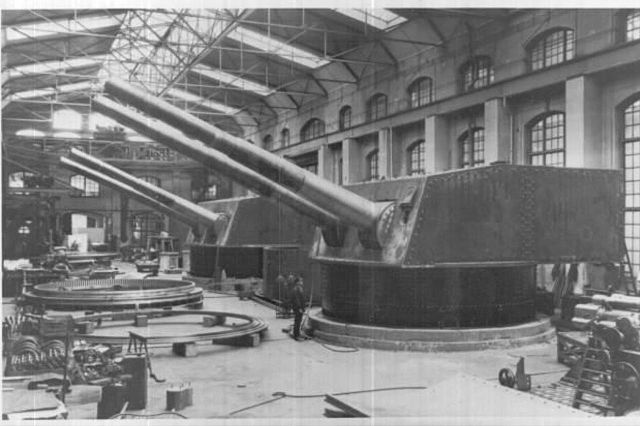
Main turrets manufactured at Bofors: Four turret, sixteen guns, ring mounts and panniers.
The ship’s heavy armament of 254-millimetre (10 in) Bofors guns that fired 255 kilograms (562 lb) AP shells up to 31 kilometres (19 mi). They were tailored to fire from behind low islands, and thus making them impossible to spot. The two twin turret were tailored for the needs of the Finns, and had not relation with any in the Kriegsmarine, although some systems developed for future 8-in gun cruisers were retaken. There were also a relation in the gun mounts of the 28 cm guns used on the Deutschland class. The Bofors guns were however tailored by Sweden for Finland, with simple flat-sides turrets (6 faces) and moderately sloped front plating. Each weighted 252 tons alone, with mounts elevating -10/+45 degrees and traversing safe 145° on either side, so authorizing broadsides. The mounts allowed independent elevation. The turrets were mounted on a ball track, electrically powered, with hydraulic training and elevation.
These 254 mm/45 guns used a two part jacket and screwed-on breech piece, sliding horizontal breech and later refitted with conventional Welin breech.
They were ordered to Bofors in 1929 already, with sixteen on order, eight for the ships in construction, and eight replacements. Each weighted 37.3 tons (37.9 mt) including breech mechanism and measured 262.6 in (10.339 m). They were rated as 2-3 short per minute.
They fired a 496 lbs. (225 kg) AP shell with brass cartridge 99 lbs. (45 kg) and were coupled with 154 lbs. (70 kg) propellant charges to reach a muzzle Velocity of 2,789 fps (850 mps).
At 45° their max range was 33,140 yards (30,300 m).
Secondary: Eight 105 mm/50 Bofors
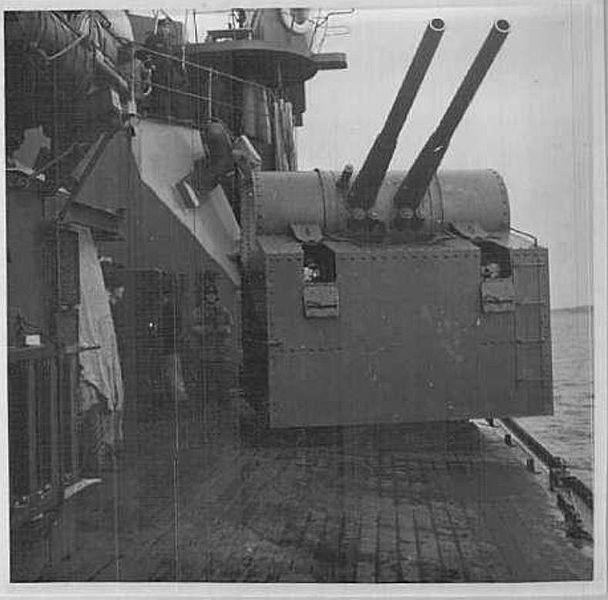
These 4-in guns were a development of the 10.5 cm kanon m/34. They were widely used by the Swedish Coastal Artillery and army as field guns. In the case of Finland, they were designed with a longer barrel to be dual purpose as the Kanon 10.5 m/32 (4.1″) or Model 1932, 50 caliber. Tailored for the Finnish coastal ships, they were designed in 1930, entering service in 1932. The guns weighted 2.51 tons with their breech mechanism, measuring 206.7 in (5.250 m) overall. Rate Of Fire was 15 rounds per minute. They fired either a 55.6 lbs. (25.2 kg) or 35.3 lbs. (16 kg) shell with a 9.04 lbs. (4.1 kg) propellant charge at 2,625 fps (800 mps), giving them a range of 45° against ships at 19,900 yards (18,200 m) and aceiling at 85 degrees of 39,400 feet (12,000 m).
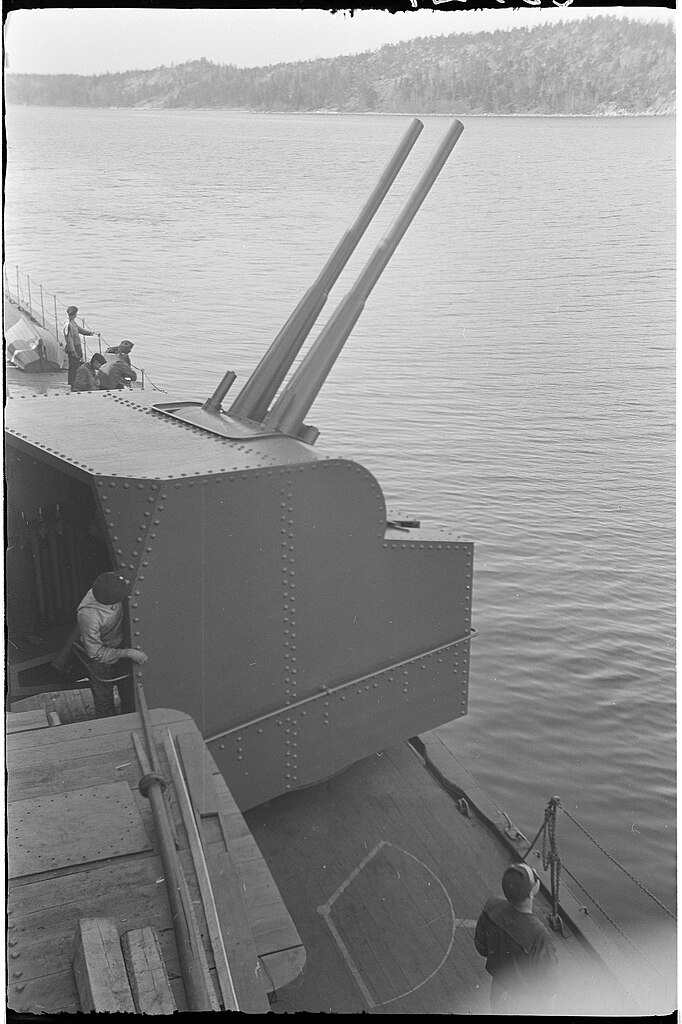
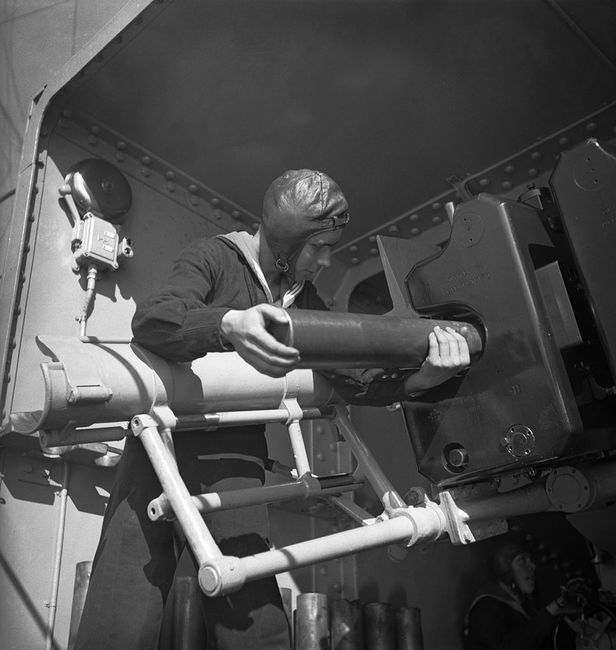
The gun turrets were back open, weighting 21.75 tons and Hand operated. Two turrets were located alongside the main structure, in recesses on either sides and the other two in surelevated position overlooking the main turrets fore and aft. This ensured six guns in broadside, in chase and retreat. In WW2 however these guns were proved too slow for 1942 aircraft, but still efficient to FLAK slower Soviet bombers in 1939.
AA
Initially in 1932, this was limited to four single British 2-pdr (40mm/39 QF Mk II) “pom-pom” anti-aircraft guns and two Madsen 20 mm/60 autocannons. After the winter war, the 2-pdr were found inadequate and replaced by the far better twin 40mm/56 Bofors M36 Bofors and two single 40mm/60 Bofors M38 instead placed on platforms. The Madsen were ported to four total at first, in 1941. Later in WW2, Ilmarinen was lost, and thus onlmy Väinämöinen was reinforced, earning four more Madsen autocannons, for a total of eight.
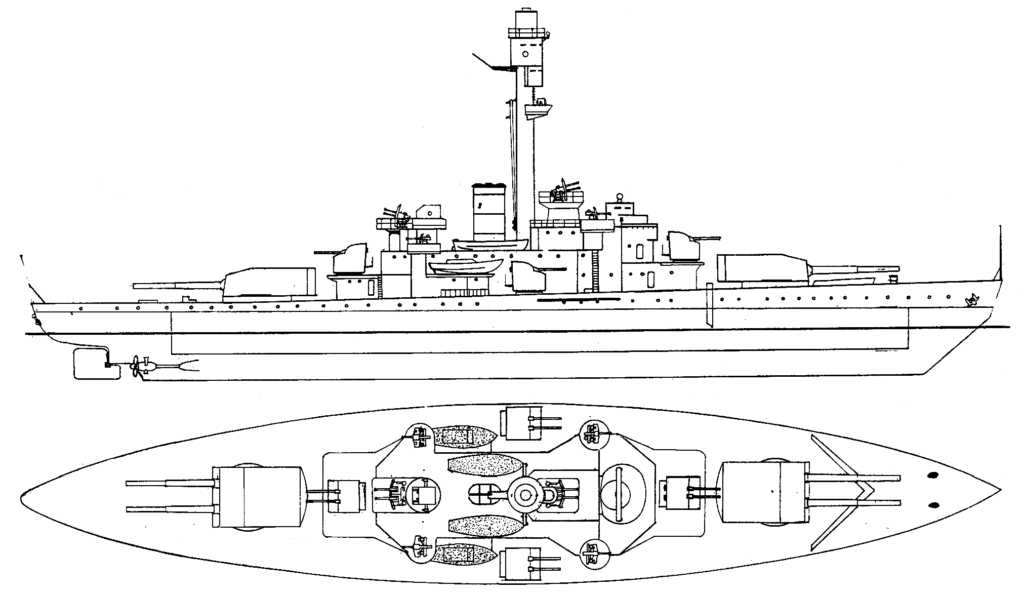
Vainamoinen in 1944 showing her Bofors and Madsen guns
⚙ specifications |
|
| Displacement | 3,900 t |
| Dimensions | 93 x 16.864 x 5m (305.1 x 55.33 ft x 16.4 ft) |
| Propulsion | 2 shafts, 4x Krupp engines 875 kW (1,173 hp) 3,500 kW (4,700 hp) |
| Speed | 14.5 knots (26.9 km/h; 16.7 mph) |
| Range | 700 nmi (1,300 km; 810 mi) |
| Armament | 2×2 254 mm (10 in), 4×2 105 mm Bofors, 4× 40, 2× 20 mm Madsen |
| Protection | Belt 55-50mm, turrets: 100mm face, decks 20-13mm CT 120 mm |
| Crew | 410 |
 Väinämöinen
Väinämöinen
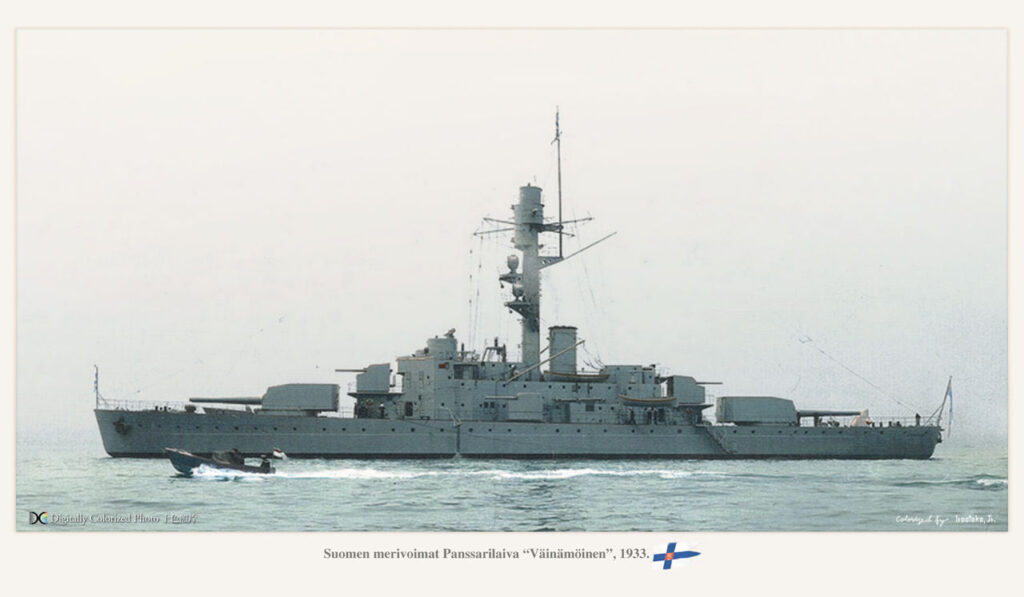
Combat record of the lead ship after 1932 is unknown. It is likely she made her shakedown cruise, initial and then advanced training for over a year, then back to the yard for fixes and really starting fleet operations from 1933 onwards, with pauses in winter as ice set in.
Joined by her sister in 1934, both probably held common training before parting in their respective forces.
As the Winter War commenced in 1939, both were transferred to the Åland islands, protecting them against an expected invasion. It did not came however as when ice cover became too thick by they were transferred to Turku, providing their own anti-aircraft firepower to defend the harbour and city against Soviet aviation.
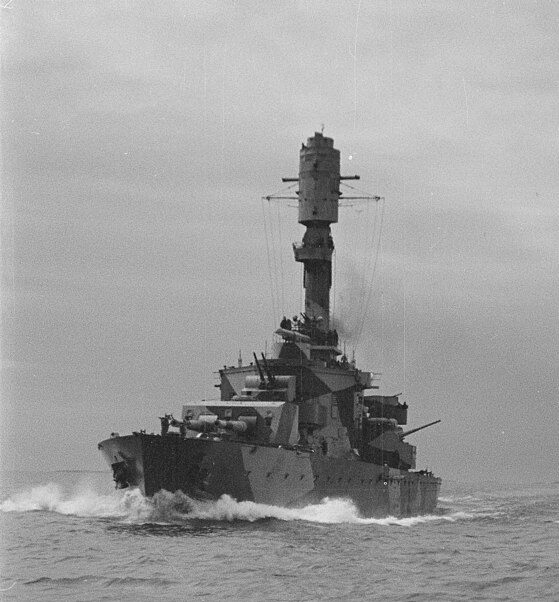
Continuation War
Until 1941, both vessels never used their main artillery, but this changed as both Väinämöinen and Ilmarinen were asked to provide cover fire during the Red Army evacuation at the beginning of the Continuation War, off and around Hanko Peninsula. Väinämöinen took part in Operation Nordwind, a diversion held on 13 September 1941, but the crew learned soon her sister ship Ilmarinen was lost in a minefield, enlighting a crucial weakness in their design. As the Finns worked to lay more and more minefields, moves from the lead vessel became more restricted.
In 1943 the “Detachment Väinämöinen” was created, a task force centered around the surviving capital ship, which defended a flotilla of six VMV patrol boats and six motor minesweepers. This force was ordered east, takin positions along the coast, between Helsinki and Kotka. She was not called as the largest Soviet ships left Leningrad, besieged, the ones remaining being used as floating batteries. Väinämöinen was tasked to patrol the Gulf of Finland, on a reactualized map of minefields, between the “Seeigel” and “Nashorn”. She was also tasked to protect the German-Finnish anti-submarine line, set across the gulf on a large distance.
With the Soviet attack of the summer of 1944, the aviation was hard at work trying to find Väinämöinen and sink her. Intense Reconnaissance missions eventually spotted her anchored, in Kotka harbour under heavy camouflage. Then the Soviet air staff was ordered to mount a massive raid, with 132 bombers and fighters. They spotted the ship, and under overwhelming bombing, she was sunk. However later intel reported this was not the Finnish vessel but instead Flakschiffe Niobe, a former cruiser converted.
The Continuation War ended and Väinämöinen, still intact, never found thanks to her impressive camouflage. In September 1945 she saw the end of the war, but the postwar context proved quickly adverse for Finland. The coastal defence vessel after negociations was handed over as war reparations to the Soviet Union on 29 May 1947. She was assigned to the Soviet Baltic Fleet and renamed “Vyborg”. In total she spent 6 years berthed at Porkkala, a Finnish base for the Soviet Navy. She was nicknamed “Vanya” by sailors as well. She saw limited modernization in the 1950s, although details are lost in time. She became an accommodation ship in Tallinn. By she was inactivated, and armament was removed gradually from 1958. Talks to return her to Finland went to nowhere as the latter saw little interest in the now 30-years old vessel at the age of jets and missiles. She was instead scrapped in 1966 at Leningrad, leading to the collection of 2,700 tons of metal.
 Ilmarinen
Ilmarinen
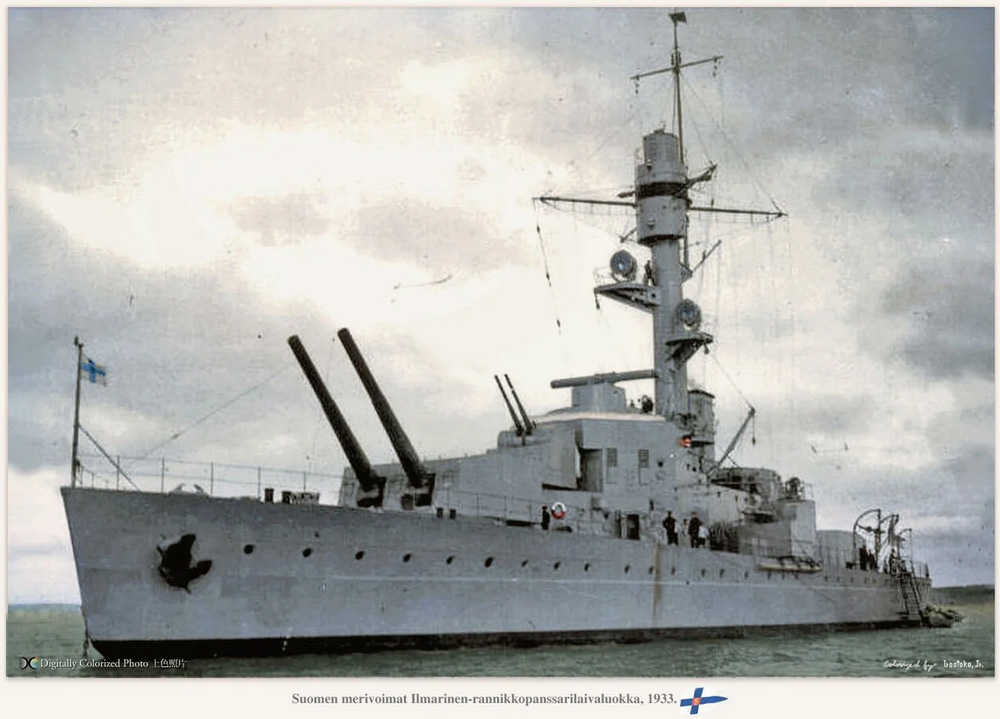
Same story here. In 1933-34 Ilmarinen proceeded to early service drills, short shakedown in the gulf, fixes and more weapons qualifications. In 1935-38, she made a few journeys to different ports in Finland, but ran aground while near Vaasa, despite her shallow draught. Tugs freed her with relative ease and while in drydock no repairs seems necessary.
The Winter War commenced and Ilmarinen, Väinämöinen sailed to Åland to counter the possible Soviet invasion. The League of Nations by decree had previously made the Ålands islands a demilitarized zone. The Soviet were keen to attack there, so the Finns mobilized their assets to be posted there. However as ice became too thick by December 1939 the two ships sailed back to Turku, providing AA support. They were painted white apparently during this period as concealment but still were discovered by Soviet aircraft. Some attacked. One such raid cost Ilmarinen one death and several injuries due to a near-miss.
The Continuation War saw her relocated with her sister at the Hanko Peninsula, making five trips between July and November 1941. Ilmarinen at last fired twenty shells at the Soviet airfield near Täcktom, on 12 July 1941 after being already hit by German Junkers Ju 88s of Küstenfliegergruppe 806.
Next for Ilmarinen and her sister, Operation Nordwind on 13 September 1941. German forces tried to capture the Estonian islands of Saaremaa and Hiiumaa. They were supported by the Finnish fleet, alongside German ships for a diversionary operation, trying to lure out the Soviet fleet away from the southern landing. The German fleet composed of the cruisers Emden, Köln, and Leipzig were in distant support if battle the diversion was a success. i
But this composite axis task force of the nort remained unnoticed. They reached 25 nautical miles (46 km; 29 mi) south of Utö before being ordered to fold down to base. Minesweepers led the formation, but they crossed minefields that were not always easy to clean up and by safety, the Ilmarinen captain ordered to set up the paravanes. One was dragging a mine cable, but the crew failed to notice before it was too late. The cable was dragged all the way down to the hull and the mine made contact. Likely the ship caught one or two sea mines, and they folded on her when she turned. They exploded under the hull bottom with disastrous consequences. The detonation blew a large hole underwater, which rapidly submerged the engine spaces. The already somewhat unstable ship developed a rapid list and eventually keeled over, sinking in just seven minutes.
It’s not even sure that the captai had the time to assess the situation and ordered to abandon ship. Many were trapped inside when she capsized and of around 300, only 132 men survived, 271 going to the bottom trapped inside the hull. 57 were rescued by the patrol boat VMV 1, loaded to the brim. But she stayed at a distance as there was a risk of magazines explosion.
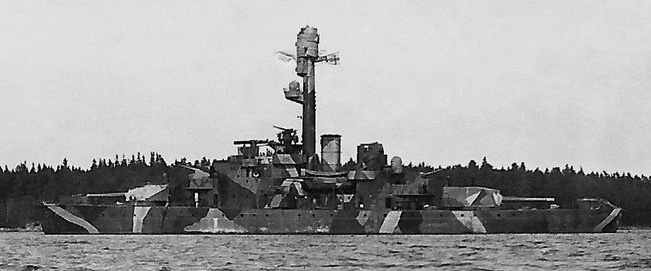
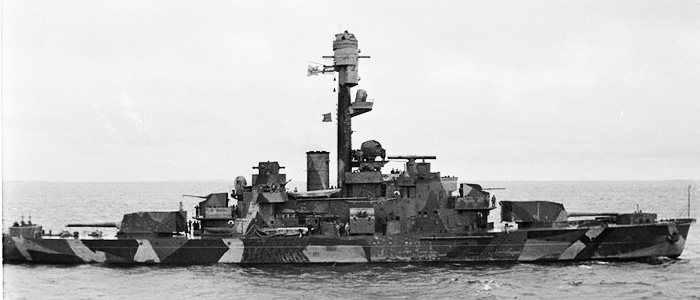
Camouflage of Ilmarinen, more elaborated than Ilmarinen
Survivors were later known as the “Ilmarisen uimaseura” (Ilmarinen’s Swimming Club). The captain, Ragnar Göransson was among them, as well as the Commander of the Finnish Navy, Eero Rahola, and future architect Lieutenant Viljo Revell. This becale a national tragedy, the greatest loss of the Finnish Navy in WW2, ans news of it were kept secret for a time, until Sweden’s reported it. In addition sailor obituaries in Finnish newspapers reached such a level the Soviet intel also confirmed this loss. This was indeed a Soviet success since the minefield was originally a Russian one.
The wreck of Ilmarinen was located in 1990, upside-down due to the shallow water (she did not have the time to turn again), and she was found deeply embedded in mud under 70 metres (230 ft). Now a war grave she is closed to another wreck, the steamer Estonia just 15 km (9.3 mi) away. They are both prized diving spot, alshtough waters are murky there.
Gallery
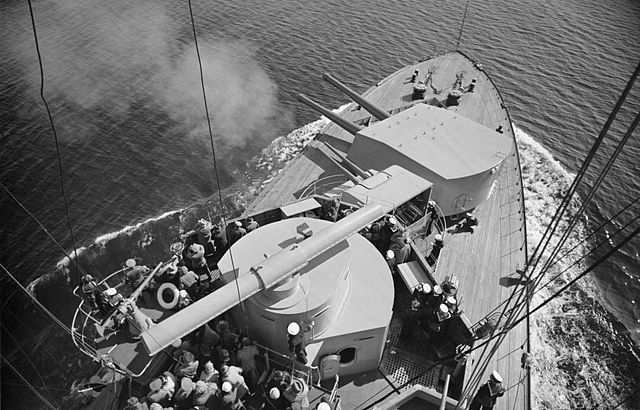
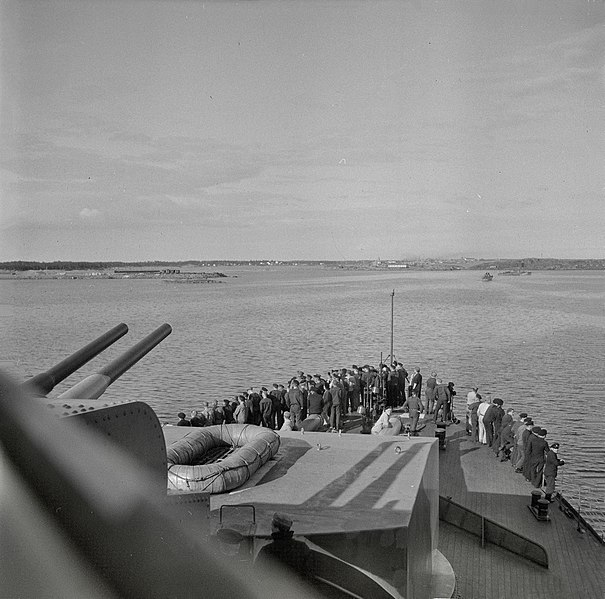
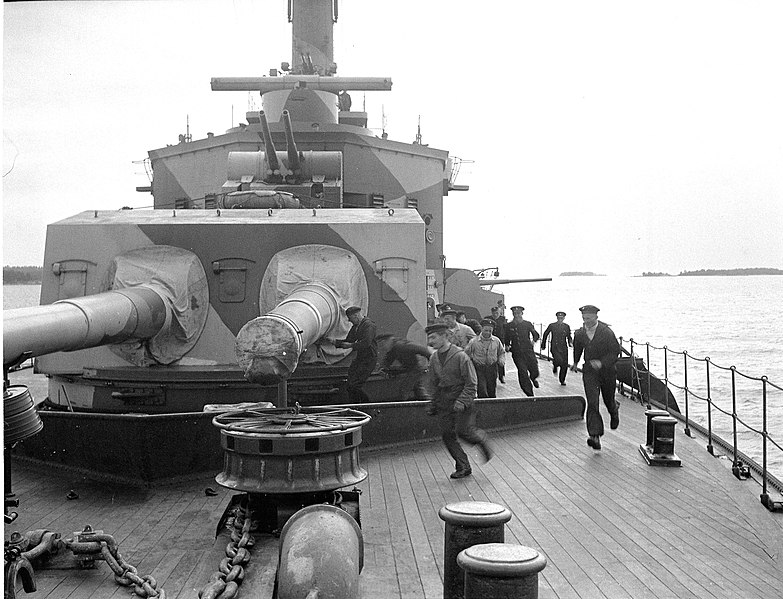
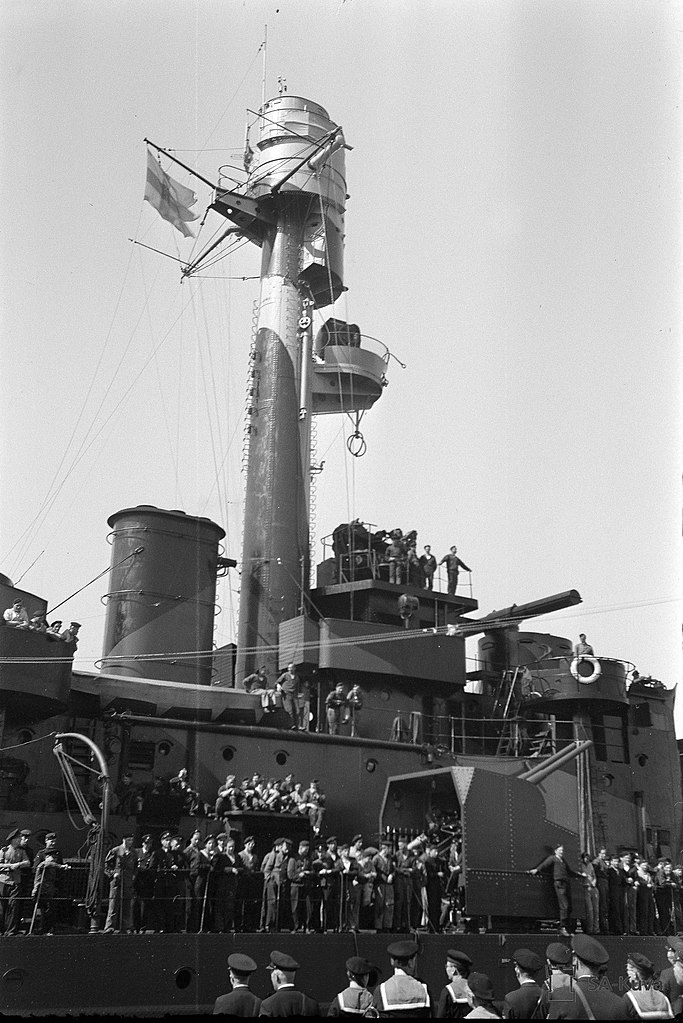
Various aspects of the ships: Overview of the forward telemeter from the tower, view from the bridge, and wartime crew training, 1941, view of the bridge and tower.

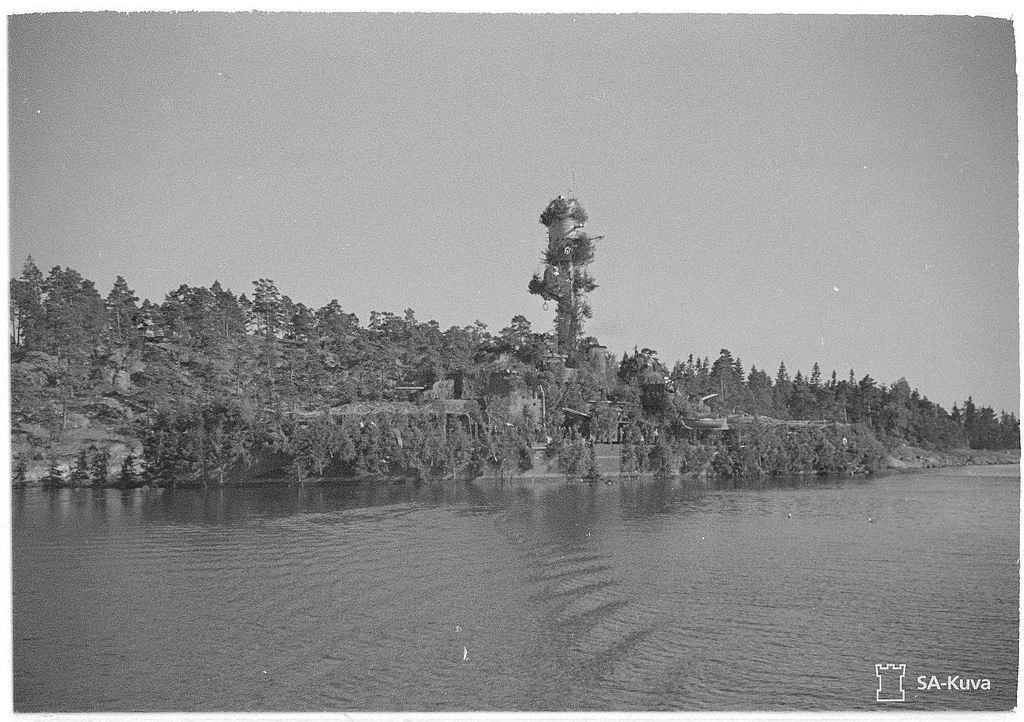
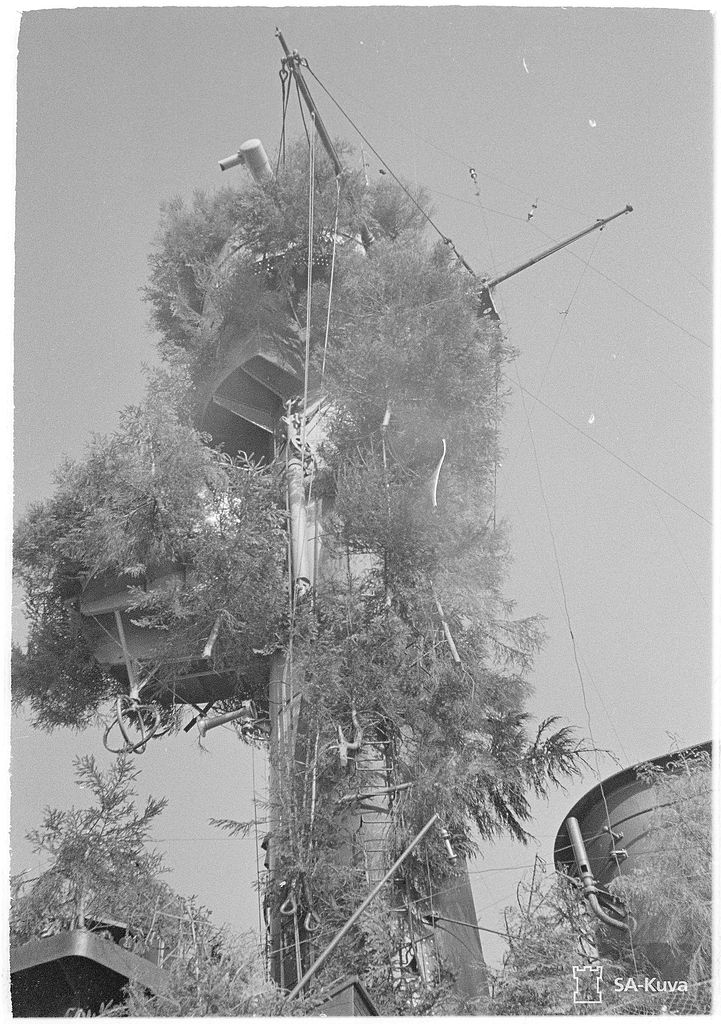
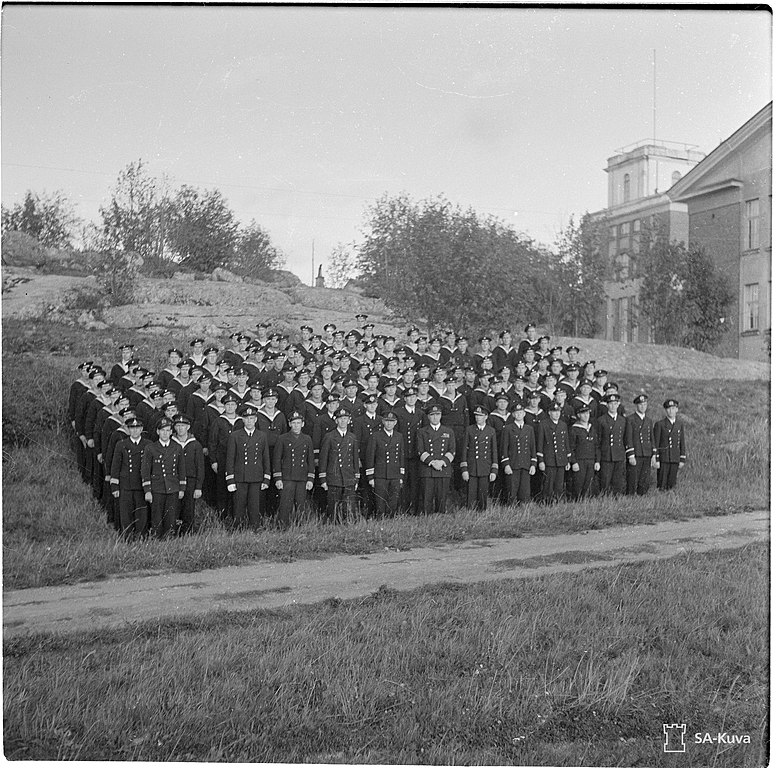
Read More/Src
Books
Aromaa, Jari (2018). “The Coast Defence Ship Väinämöinen (1930)”. In Taylor, Bruce (ed.). The World of the Battleship: The Lives and Careers of Twenty-One Capital Ships of the World’s Navies, 1880–1990. Barnsley: Seaforth Publishing. ISBN 978-0-87021-906-1.
Haukiala, Olli-Pekka (2004). “Question 22/00: Finnish Coast Defense Ship “battleship” Vainamoinen”. Warship International. XLI (3): 240–241. ISSN 0043-0374.
Hone, Trent; Miller, Vernon J.; Spindler, John & Wilderding, John H. Jr. (2001). “Question 22/00: Finnish Coast Defense Ship “battleship” Vainamoinen”. Warship International. International Naval Research Organization. XXXVIII (3): 238–239. ISSN 0043-0374.
Links
web.archive.org pansarfartyget-ilmarinen
ww2db.com/
navypedia.org/
navweaps.com 10-in bofors
navweaps.com 4-in bofors
on laststandonzombieisland.com
on alchetron.com
navypedia.org/ vainamoinen.htm
Videos
Model Kits
On scalemates
Fairy Kikaku 1:700: Illmarinen – 1933, Combrig 1:700 Vainamoinen – 1932, XP Forge 1:1200.

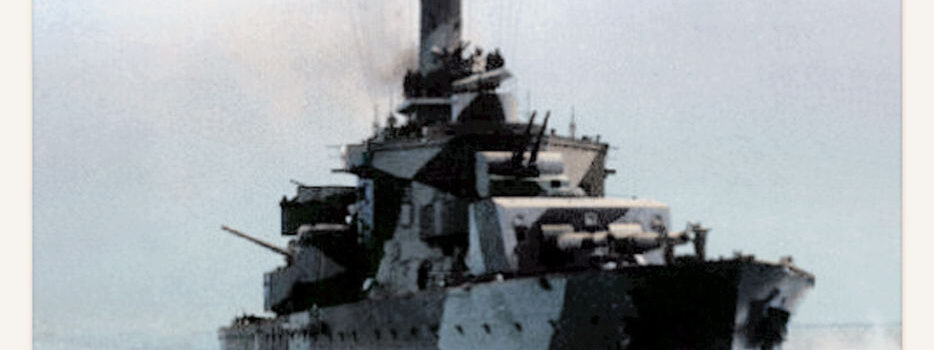
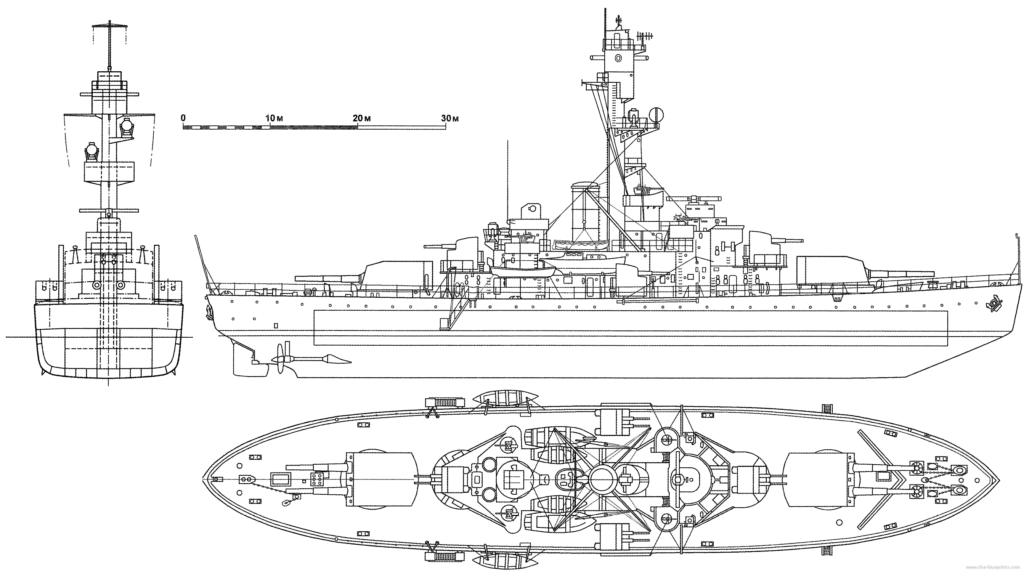
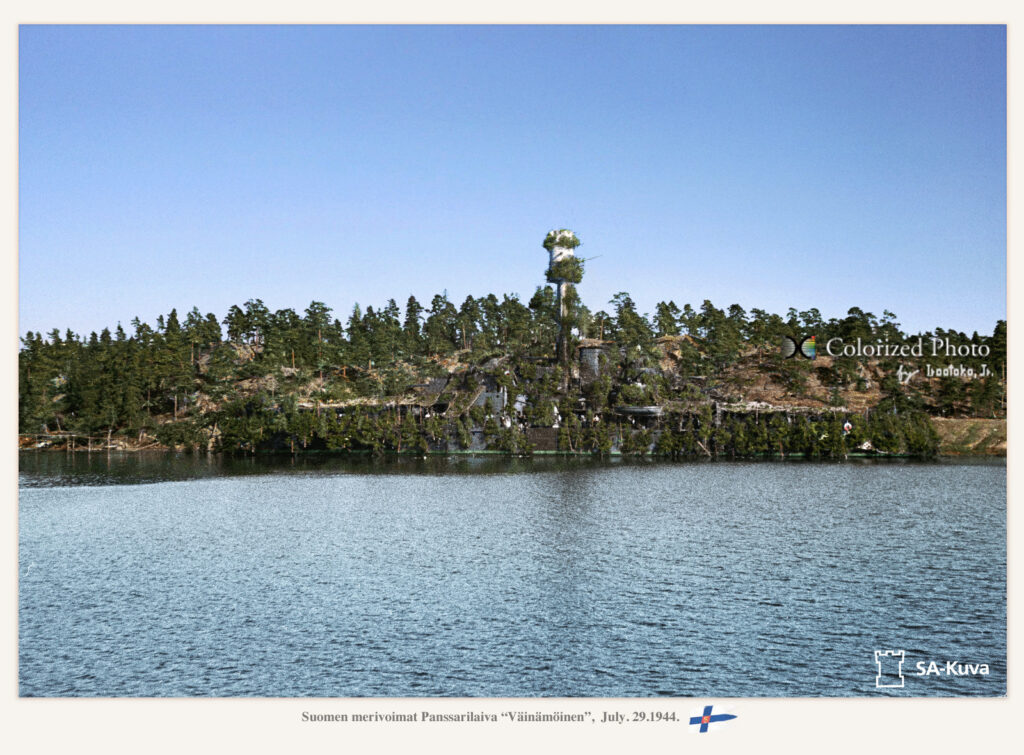
 Latest Facebook Entry -
Latest Facebook Entry -  X(Tweeter) Naval Encyclopedia's deck archive
X(Tweeter) Naval Encyclopedia's deck archive Instagram (@navalencyc)
Instagram (@navalencyc)





 Austrian Navy
Austrian Navy French Navy
French Navy Royal Navy
Royal Navy Armada Espanola
Armada Espanola K.u.K. Kriegsmarine
K.u.K. Kriegsmarine Dansk Marine
Dansk Marine Nautiko Hellenon
Nautiko Hellenon Koninklije Marine 1870
Koninklije Marine 1870 Marinha do Brasil
Marinha do Brasil Osmanlı Donanması
Osmanlı Donanması Marina Do Peru
Marina Do Peru Marinha do Portugal
Marinha do Portugal Regia Marina 1870
Regia Marina 1870 Nihhon Kaigun 1870
Nihhon Kaigun 1870 Preußische Marine 1870
Preußische Marine 1870 Russkiy Flot 1870
Russkiy Flot 1870 Svenska marinen
Svenska marinen Søværnet
Søværnet Union Navy
Union Navy Confederate Navy
Confederate Navy Armada de Argentina
Armada de Argentina Imperial Chinese Navy
Imperial Chinese Navy Marinha do Portugal
Marinha do Portugal Mexico
Mexico Kaiserliche Marine
Kaiserliche Marine 1898 US Navy
1898 US Navy Russkiy Flot
Russkiy Flot French Naval Aviation
French Naval Aviation Russian Naval Aviation
Russian Naval Aviation Sovietskiy Flot
Sovietskiy Flot Royal Canadian Navy
Royal Canadian Navy Royal Australian Navy
Royal Australian Navy RNZN Fleet
RNZN Fleet Chinese Navy 1937
Chinese Navy 1937 Kriegsmarine
Kriegsmarine Chilean Navy
Chilean Navy Danish Navy
Danish Navy Finnish Navy
Finnish Navy Hellenic Navy
Hellenic Navy Polish Navy
Polish Navy Romanian Navy
Romanian Navy Turkish Navy
Turkish Navy Royal Yugoslav Navy
Royal Yugoslav Navy Royal Thai Navy
Royal Thai Navy Minor Navies
Minor Navies Albania
Albania Austria
Austria Belgium
Belgium Columbia
Columbia Costa Rica
Costa Rica Cuba
Cuba Czechoslovakia
Czechoslovakia Dominican Republic
Dominican Republic Haiti
Haiti Hungary
Hungary Honduras
Honduras Estonia
Estonia Iceland
Iceland Eire
Eire Equador
Equador Iran
Iran Iraq
Iraq Latvia
Latvia Liberia
Liberia Lithuania
Lithuania Mandchukuo
Mandchukuo Morocco
Morocco Nicaragua
Nicaragua Persia
Persia San Salvador
San Salvador Sarawak
Sarawak Uruguay
Uruguay Venezuela
Venezuela Zanzibar
Zanzibar Warsaw Pact Navies
Warsaw Pact Navies Bulgaria
Bulgaria Hungary
Hungary

 Bundesmarine
Bundesmarine Dutch Navy
Dutch Navy Hellenic Navy
Hellenic Navy Marina Militare
Marina Militare Taiwanese Navy
Taiwanese Navy Chinese Navy
Chinese Navy Indian Navy
Indian Navy Indonesian Navy
Indonesian Navy JMSDF
JMSDF North Korean Navy
North Korean Navy Philippines Navy
Philippines Navy ROKN
ROKN IDF Navy
IDF Navy Royal New Zealand Navy
Royal New Zealand Navy Egyptian Navy
Egyptian Navy South African Navy
South African Navy

































 RN
RN
 Marine Nationale
Marine Nationale
 Soviet Navy
Soviet Navy
 dbodesign
dbodesign